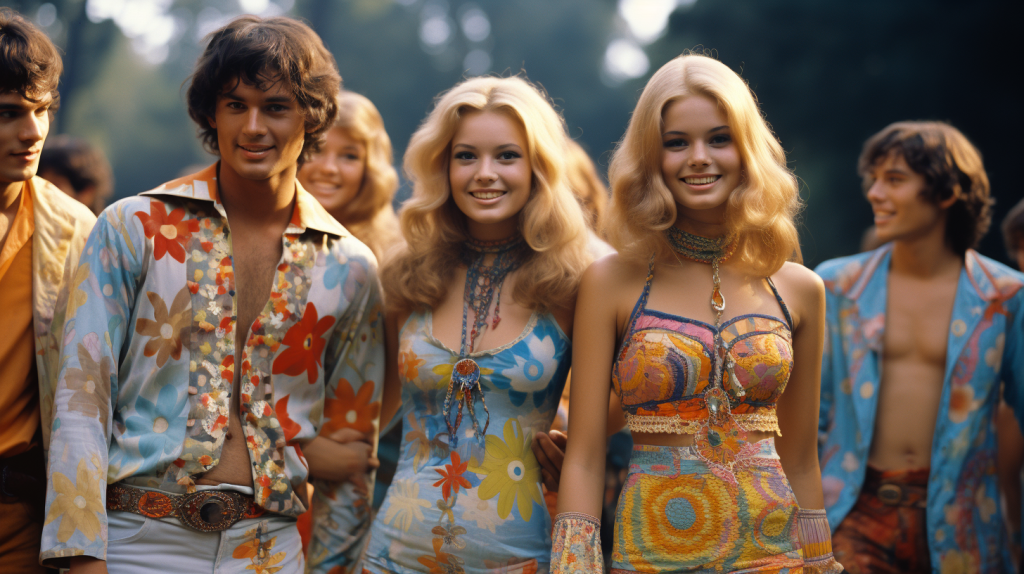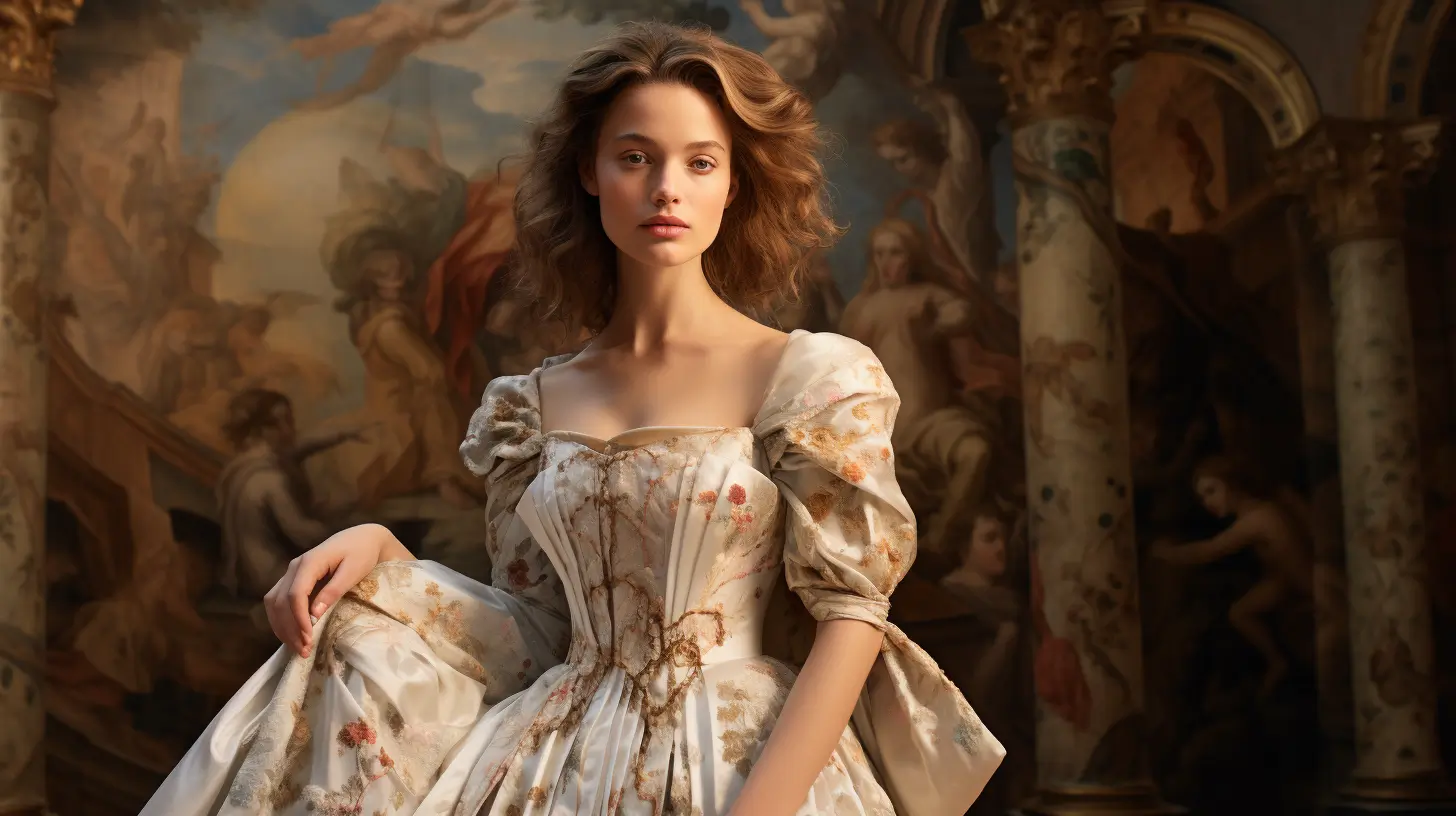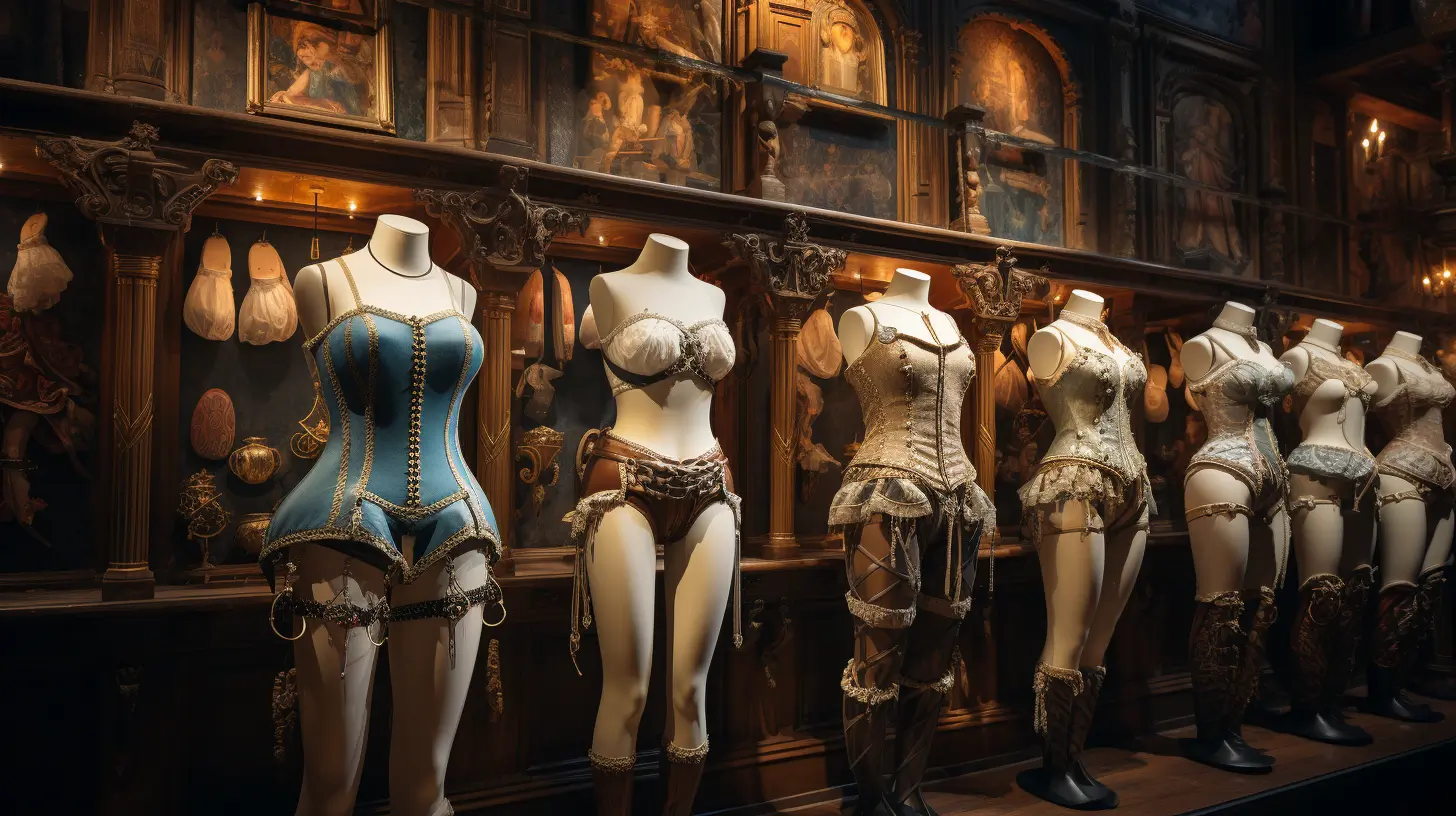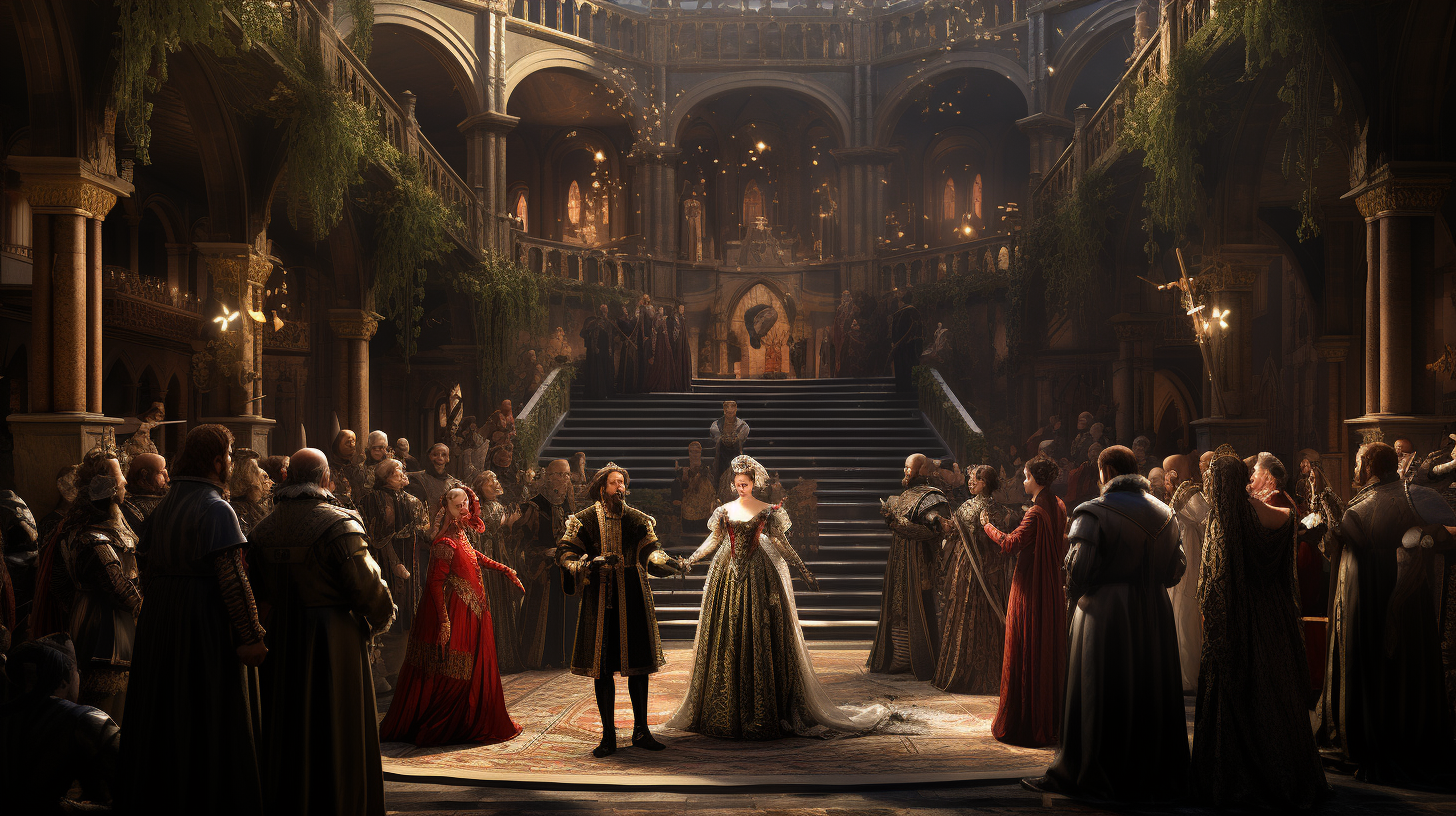
The Rebel Revolution: Mid-Century Fashion in the Swinging Sixties
Step into a time machine, and let’s whirl back to the 1960s, a decade that rattled the foundations of conformity and set the stage for a fashion revolution. This wasn’t just a change in hemlines and collars; it was a cultural earthquake, shaking the very essence of identity and expression.
The sixties threw open the doors to a world where fashion was no longer just about elegance and etiquette; it was a loud, proud statement of individuality and rebellion. In this era, clothing became a canvas, painted with bold strokes of mod styles, vibrant psychedelic prints, and the unmistakable hues of counterculture fashion.
In the bustling streets of London, the sharp, clean lines of mod fashion emerged, cutting through the fashion scene with its tailored suits and geometric patterns. Across the pond, the American youth were dancing to a different beat, one that was vibrant, free, and untamed, much like their psychedelic prints.
This wasn’t just fashion; this was a rebel yell, a sartorial revolution, where each stitch and seam spoke of a generation breaking free from the shackles of tradition. In our journey through “The Rebel Revolution: Mid-Century Fashion in the Swinging Sixties,” we’re going to uncover the threads that wove together to create this tapestry of transformation.
So, buckle up! We’re about to embark on a groovy exploration of a fashion era that didn’t just change the game; it rewrote the entire playbook.
The Rise of Mod Style
If the 1960s were a canvas, then mod style was one of its boldest brushstrokes. Originating from the modernist movement in London, this style was more than just fashion; it was an emblem of a youth culture carving out its own identity in post-war Britain.
The Birth of Mod Fashion
Mod style didn’t just appear; it erupted in the late 1950s, reaching its zenith in the mid-60s. Born in the jazz clubs and coffeehouses of London, it was a style adopted by the young, the restless, and the forward-thinking. They were ‘mods’ – modernists who were all about sharp, clean lines and an ethos that screamed innovation and urbanity.
Key Elements of Mod Style
Imagine fitted suits, sleek dresses, and polo shirts, all characterized by their simplicity and fine tailoring. The hallmark of mod fashion was its understated sophistication. Clothes were slim-fitting, creating a silhouette that was at once elegant and edgy. Women’s fashion, led by designers like Mary Quant, championed short skirts and shift dresses, defying the conservative styles of the previous decade.
The color palette of mod fashion was as bold as its patterns – think geometric prints, broad stripes, and checks. Black and white were staples, but there was no shying away from bright, eye-catching colors. This was a style that wanted to be seen, a stark contrast to the muted tones of the 1950s.

The Influence of Music and Pop Culture
Mod style was inextricably linked to the music and pop culture of the time. The Beatles and The Rolling Stones, with their iconic suits and mop-top haircuts, were not just music legends; they were fashion icons, embodying the mod ethos in every thread. Music wasn’t just a background track to the mod scene; it was its heartbeat, driving the fashion forward with every beat.
As we peel back the layers of mod style, we uncover not just a fashion trend, but a cultural movement. It was a statement of modernity, a way for the youth to differentiate themselves from the older generation, and a celebration of new ideas and attitudes that were sweeping across the globe.
Psychedelic Prints and the Color Revolution
The 1960s didn’t just whisper change; they shouted it, and nowhere was this more evident than in the explosion of psychedelic prints and colors that defined this era’s fashion. This was the age of love, freedom, and expression, mirrored in every swirl, pattern, and hue that adorned the clothing of the time.
The Emergence of Psychedelic Fashion
As we stepped further into the 1960s, fashion took a wild turn. The influence of psychedelic rock, the growing popularity of hallucinogens, and a general atmosphere of rebellion against the status quo gave birth to a style that was as bold as it was unconventional. Psychedelic fashion was more than just clothing; it was a visual manifestation of a generation’s mindset – free, experimental, and vivid.
The Palette of a Revolution
This era’s palette was a daring departure from the past. Electric blues, hot pinks, neon greens, and sunburst yellows splashed across fabrics in a riot of colors. The patterns were just as bold – think swirling motifs, abstract shapes, and kaleidoscopic designs that seemed to dance and move with the wearer.
Icons and Influencers of Psychedelic Style
Key figures in music and art were not just influencers; they were embodiments of this style. The Beatles’ “Sgt. Pepper’s Lonely Hearts Club Band” album cover, with its saturated colors and intricate patterns, is a quintessential example. Artists like Jimi Hendrix and Janis Joplin wore their psychedelic wardrobes as badges of honor, symbols of their artistic and personal freedom.
The Lasting Impact of Psychedelic Fashion
While psychedelic fashion was a hallmark of the 60s, its influence didn’t fade with the turning of the decade. It set a precedent for self-expression in fashion, paving the way for future generations to experiment with bold patterns and colors. Today, echoes of this style can still be seen on runways and streetwear, a tribute to a time when fashion dared to dream in technicolor.

Counterculture and Fashion
The 1960s were not just a time of fashion revolution; they were a period of significant social and political upheaval. Fashion during this era was more than a statement of style; it became a medium for protest, a way to challenge societal norms and voice ideologies. It was the fabric of the counterculture movement.
Fashion as a Form of Protest
In the heart of the 1960s, amidst a backdrop of social upheaval and political unrest, fashion emerged as a dynamic form of protest. This era’s counterculture movement, most notably represented by the hippies, was not just a social group; it was a living, breathing challenge to the status quo. The conservative, buttoned-up norms of the 1950s were being questioned, and fashion became a key battleground in this ideological clash.
Embracing Anti-Establishment Aesthetics
Hippie fashion was a visual symphony of rebellion, a sartorial rejection of the rigid, uniform styles that had dominated the previous decade. Flowing garments such as caftans and loose-fitting tunics defied the restrictive silhouettes of 1950s attire. Ethnic prints and handcrafted accessories weren’t mere trends; they were declarations of a newfound appreciation for diverse cultures and an embrace of global influences. This fashion was a statement, a call for a society that valued openness, tolerance, and peace over convention and conflict.
Symbolism in Clothing
Each element of hippie fashion carried deeper meanings. The preference for natural fabrics and earthy tones was a nod to a growing environmental consciousness and a shift towards more sustainable living practices. The incorporation of handcrafted elements – be it in jewelry, embroidery, or footwear – was a tribute to artisanal skills and a move away from mass-produced fashion. In essence, every stitch and bead in hippie fashion was a part of a larger narrative about individuality, freedom, and a departure from materialistic values.
Fashion as a Political Statement
Moreover, the counterculture’s fashion choices were inextricably linked to the era’s political movements. Anti-war sentiments were woven into the fabric of their attire, with peace symbols and anti-establishment slogans becoming common motifs. The widespread adoption of military surplus clothing, like parkas and combat boots, was an ironic statement against the Vietnam War and the military-industrial complex.
In sum, the fashion of the counterculture movement was a powerful tool of expression. It was a visible and vibrant form of protest, an emblem of a generation’s desire to rewrite the social script. Through their distinctive sartorial choices, the hippies articulated their aspirations for a world that was radically different from the one they had inherited.
Legacy of Counterculture Fashion
The impact of counterculture fashion extends far beyond the 1960s. It paved the way for future generations to view clothing as a form of personal and political expression. Today, the ideas of sustainability, ethical production, and cultural respect in fashion can trace their roots back to this movement.
Icons of the 1960s Fashion Scene
The 1960s were not only a time of dramatic changes in style and culture but also an era marked by individuals who became icons, influencing fashion in ways that still resonate today. These trendsetters were more than just fashion figures; they were emblematic of the spirit of their time, capturing the essence of the era through their style, attitude, and presence.
1. Twiggy: The Face of Mod Fashion
Lesley Lawson, better known as Twiggy, was the quintessential mod fashion icon. With her waifish figure, dramatic eyelashes, and short hair, Twiggy became synonymous with the youthful, androgynous look that defined mod style. Her influence extended beyond the fashion world; she was a symbol of the cultural shift towards a more modern, liberated society.
Mary Quant: The Mother of the Miniskirt
Designer Mary Quant revolutionized women’s fashion with the introduction of the miniskirt. This daring garment, rising several inches above the knee, became a powerful symbol of female empowerment and sexual liberation. Quant’s designs, characterized by their playful, accessible style, brought high fashion to the streets and made her a household name.
The Beatles: Fashion Icons of the Music World
The Beatles weren’t just musical innovators; they were fashion trendsetters. From their early days in tailored suits and mop-top haircuts to their later, more eclectic styles featuring psychedelic patterns and military-inspired garments, the Fab Four had a profound influence on men’s fashion. Their evolving style mirrored the changing times and contributed significantly to the mod and hippie fashion movements.
The Influence of Hollywood and European Fashion
American fashion in the 1960s was also heavily influenced by Hollywood and European designers. Actors like Audrey Hepburn and Steve McQueen set trends with their elegant, understated style. Meanwhile, European designers like André Courrèges and Paco Rabanne introduced futuristic designs, incorporating new materials like plastic and metal into their creations.
The legacy of these fashion icons is immense. They not only shaped the styles of their time but also paved the way for future fashion trends and movements. Their influence can still be seen in contemporary fashion, where echoes of the 1960s continue to inspire designers and fashion enthusiasts alike.
The Enduring Legacy of 1960s Fashion
As we come to the end of our exploration of “The Rebel Revolution: Mid-Century Fashion in the Swinging Sixties,” it becomes evident that the fashion trends of the 1960s were more than fleeting fads; they were reflections of a period marked by profound change and evolution in society and culture.
Fashion as a Reflection of Societal Change
The 1960s were a time of significant upheaval and transformation. The civil rights movement, women’s liberation, the sexual revolution, and anti-war protests – all these pivotal events found their echo in the fashion of the time. From the miniskirts symbolizing women’s emancipation to the psychedelic prints representing a break from conventional norms, every style choice of the decade was imbued with meaning and purpose.
The Influence on Contemporary Fashion
The legacy of 1960s fashion is undeniable in today’s fashion world. The bold patterns, vibrant colors, and innovative silhouettes of the era continue to inspire contemporary designers. Elements of mod style, with its clean lines and minimalism, are recurrent themes in modern fashion collections. The hippie aesthetic, with its emphasis on sustainability and handcrafted details, resonates with today’s eco-conscious and artisanal fashion movements.
More Than Just Clothing
But perhaps the most significant legacy of 1960s fashion is the idea that fashion is more than just clothing; it’s a powerful form of self-expression, a reflection of one’s beliefs and values. The 1960s taught us that what we wear can speak volumes about who we are and what we stand for, a lesson that remains relevant in today’s diverse and ever-changing fashion landscape.
As we look back at the swinging sixties, we see more than just an era of style; we see a period that redefined fashion as a tool for personal and social change. The trends of the 1960s were bold, they were revolutionary, and they left an indelible mark not just on the wardrobes of the time but on the very fabric of society.





